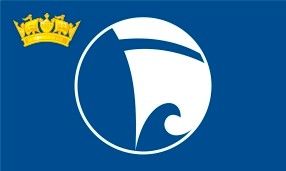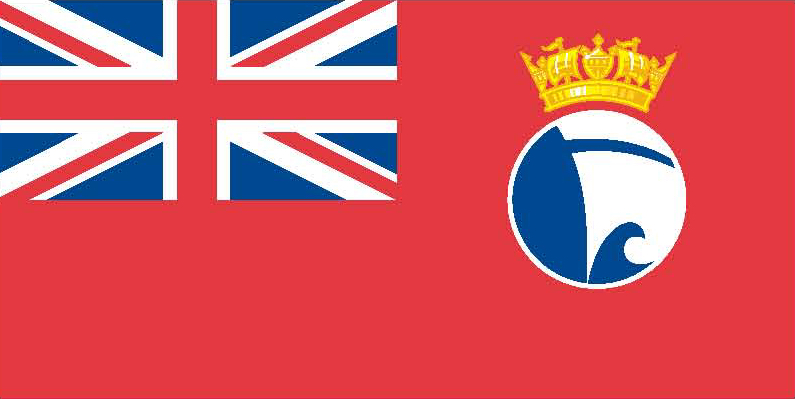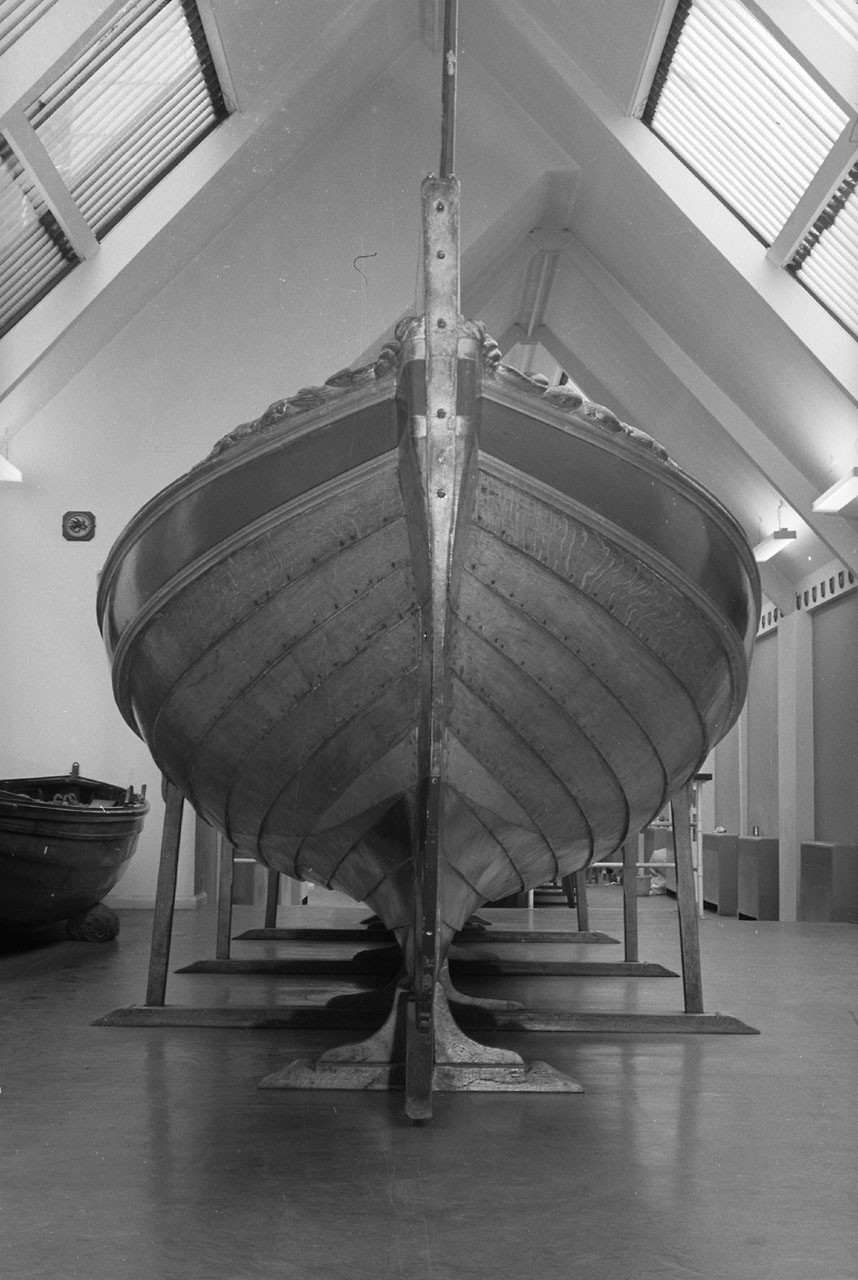


Details
Construction
Dimensions
History
This remarkable boat was commissioned by William III for Queen Mary II in 1689. Although generally similar in proportions, her hull is not in the true wherry tradition. Her original canopy was green and gold; the present one was made in 1912.
After 1849 when Prince Frederick's Barge, was taken out of service she was the only remaining State Barge of the English Crown. She was used in 1912 when King George V and Queen Mary attended the Royal Regatta at Henley, and they again used her in the Peace Pageant in August 1919.
On 4 August 1919, on the fifth anniversary of Britain’s declaration of war on Germany, a Peace Pageant was held consisting of a vast River Procession. The Thames Peace Pageant celebrated the efforts of English mariners and merchant seamen in the First World War. The pageant set off from London Bridge at 4pm on Bank Holiday Monday 4 August 1919 with QUEEN MARY’S SHALLOP at its head and a huge variety of water craft following.
QUEEN MARY’S SHALLOP carried the King, the Queen, Queen Alexandra, the Prince of Wales, Prince Albert, Princess Mary and Princess Victoria, who took their seats to the accompaniment of the National Anthem played by the Royal Marine Band and the guns at the Tower of London. The royal barge was rowed by eight watermen in scarlet coats, black velvet jockey caps, and white gloves.
The procession stretched along five miles of the river, from London Bridge to Chelsea. It attracted enormous crowds to the river banks, bridges and the Thames itself, which was lined with spectators, moored boats and decorated with flags and banners. The Royal Barge, QUEEN MARY’S SHALLOP, made her last ever voyage as part of this pageant. She was the last of the old state barges. At the Peace Pageant she took centre stage, closely followed by the Lords of the Admiralty in separate ten-oared cutters, each accompanied by a steamboat.
A green steam barge carried the Lord Mayor, following which were a dozen twelve-oared Navy cutters, four Navy picket boats with guns, an armed motor launch, and a barge displaying guns used in the First World War. The procession featured boats of all types, from coastal motor boats to cutters and ships’ boats.
The main body of the procession featured flagged and decorated craft from maritime institutions and the British Merchant Service. Décor consisted of bunting and 50 streamers, decking the bridges, ships, wharves, cranes and scaffolding. Choirs sang sea songs on the Embankment and bands played along the bank and at those piers where King George V entered and disembarked the royal barge. At Cadogan Pier the King disembarked to survey the pageant and receive the salutes of various assembled units. Above the saluting point the procession turned and returned eastward.
The river pageant attracted a big audience, including members of the House of Commons who adjourned to the Terrace to watch the procession go by. During the planning stage concern had been expressed about the accommodation available for wounded soldiers to view the procession. On the day, special provision was made, with the whole of Lambeth Bridge allotted by the London County Council as a viewing platform for the wounded.
The shallop was presented to the National Maritime Museum by King George V in 1930 but was not displayed until 1955 when the Barge House was completed.
Significance
1. What is the vessel’s ability to demonstrate history in her physical fabric?
Evidence for designs, functions, techniques, processes, styles, customs and habits or uses and associations in relation to events and people. How early, intact or rare these features are may impact on significance.
QUEEN MARY’S SHALLOP is a remarkable boat constructed using traditional methods and materials available at the time, similar to those used in the building of wherries. Although generally similar in proportions, her hull is not in the true wherry tradition. Her overall length is nearly 42 feet, her beam over 6½ feet, and she has a depth of nearly 3 feet. Her timber hull is constructed of oak and elm using the clinker method. The planks were held together using treenails, iron and copper nails, and were clenched. She was fitted with ten oars and was propelled by rowing. She has no decks but was fitted with a portable canopy; the original one was green and gold; the present one was made in 1912. Her elaborately carved forward half carries gilded decoration, and she has a raised bow displaying the Royal crest. Post 1930, she underwent some conservation work including extensive repair of her oak hull below the waterline, but much of the original construction remains.
2. What are the vessel’s associational links for which there is no physical evidence?
Associations with people or places. Off-ship research.
QUEEN MARY’S SHALLOP, now over 325 years old, was commissioned and built by William III for Queen Mary II in 1689. She was one of several state barges used regularly at State occasions during the 160 years between 1689 and 1849. However, after 1849 when PRINCE FREDERICK’S BARGE was taken out of service, she was the only remaining State Barge of the English Crown. She continued to be used until the early decades of the twentieth century. Significant occasions in which she was involved include: the Royal Regatta at Henley in 1912, attended by King George V and Queen Mary; the Peace Pageant in 1919, which she led to celebrate the efforts of English mariners and merchant seamen in the First World War. In 1930 she was presented to the National Maritime Museum by King George V. She was eventually put on public display in 1955 when the New Barge House was completed. She has been recorded on the National Register of Historic Vessels since 2000 and is a member of the National Historic Fleet. Her great national significance is a consequence of her age, her rarity, and her royal associations.
3. How does the vessel’s shape or form combine and contribute to her function?
Overall aesthetic impact of the vessel, her lines, material she was built from and her setting. Does she remain in her working environment?
The primary purpose of QUEEN MARY’S SHALLOP was as an impressive ceremonial barge for use on important royal occasions. She had no other use. As a royal barge she is extremely striking in appearance with very elegant lines. Her shape, with her bluff bow and raked curved transom stern, her green and gold canopy and the fittings for twelve oarsmen, were all designed to impress, and made her perfectly fit for purpose. She retains this shape today. She is now kept in static preservation in the National Maritime Museum store pending future display.
Source: NHS-UK team, 11 November 2015.
This statement was developed as part of the Heritage Lottery funded First World War project. http://www.ww1britainssurvivingvessels.org.uk/
Key dates
-
1689
Commissioned by William III for Queen Mary II
-
1849
Became the only remaining State Barge of the English Crown when Prince Frederick's Barge was taken out Moreof service.
-
1912
Used by King George V and Queen Mary attending the Royal Regatta at Henley. Original canopy of green and gold was replaced
-
1919
Used in the Peace Pageant in August
-
1930
Presented to the National Maritime Museum by King George V but was not displayed until 1955 when the Barge House was completed
Own this vessel?
If you are the owner of this vessel and would like to provide more details or updated information, please contact info@nationalhistoricships.org.uk
